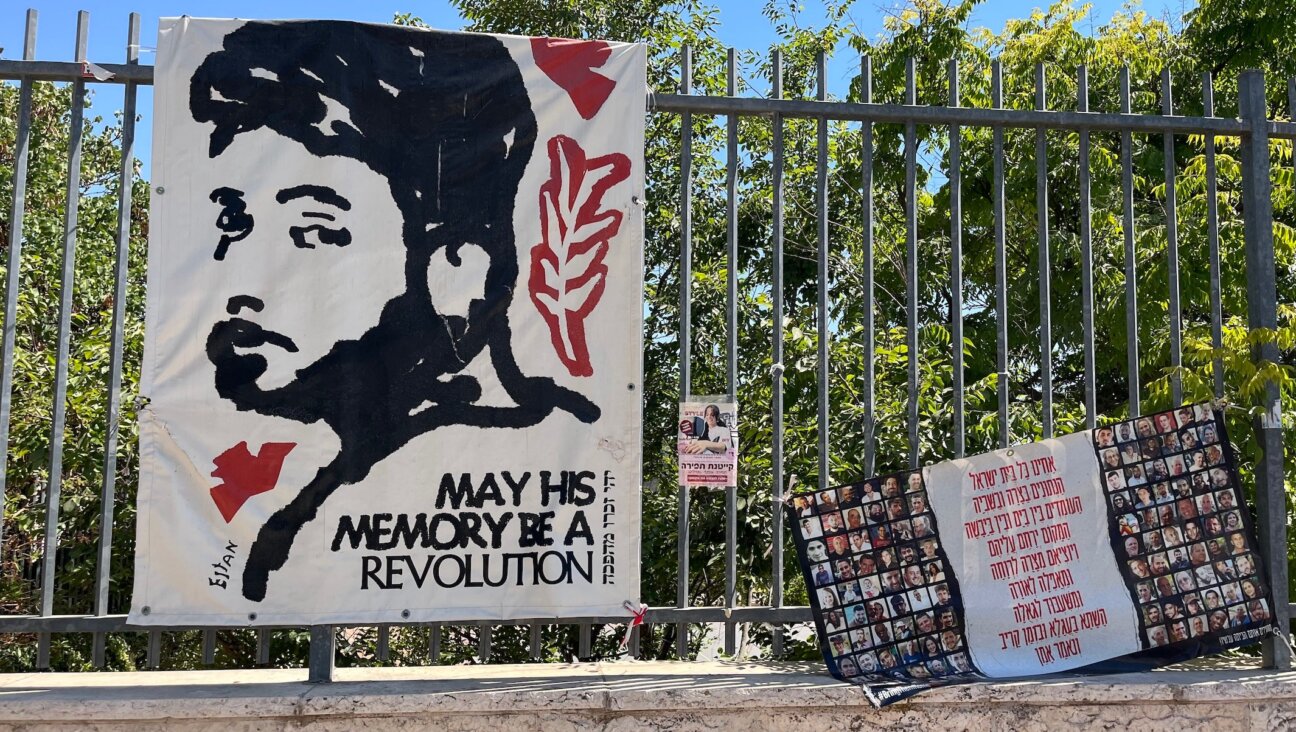Avigdor Arikha: An Artist ‘Fervent in Adhesion’ to His Subjects

Graphic by Angelie Zaslavsky
In April, 2010, when the Israeli artist Avigdor Arikha (born Dlugacz in Romania) died at age 81, he was praised for his sensitive figurative art, as well as his heroic life story. In 1941, after Arikha’s family was deported to Romanian-run concentration camps, his drawings of deportation scenes, shown to International Red Cross representatives, won freedom for himself and his sister. By 1944 they had reached Palestine, where he lived on Kibbutz Ma’ale HaHamisha in the Judean Hills, before relocating definitively in 1954 to Paris.
There he met, among other arts colleagues, Samuel Beckett, and in 2005, Arikha’s widow Anne Atik published an affectionate account of their friendship, “How It Was: A Memoir of Samuel Beckett” from Counterpoint Press. Further understanding of Arikha’s artistic milieu and goals appeared on January 18, when Les Éditions Hermann published “Painting and Looking: Writings on Art, 1965-2009” (Peinture et regard. Écrits sur l’art, 1965-2009) an augmented version of a 1991 Arikha book from the same publisher.
Arikha’s preface dated 1990 states: “Painters should paint rather than write,” but he belies this rule with perceptive comments on artists such as Chaïm Soutine. Arikha argues that Soutine “exacerbated everything he painted…. His scream still rings out.” By contrast, he dismisses the influential modernist critic Clement Greenberg for stressing the importance of “flatness, two-dimensionality” in art, a belief which Arikha notes is contradicted by works by many Italian renaissance masters; he mischievously asks whether the concepts of flatness in art and tyranny might be linked, since flatness dominates painting from ancient Egypt, India, and Persia.
In a generous 1987 essay, Arikha praises British Jewish artists such as Lucian Freud, Frank Auerbach, David Bomberg and R. B. Kitaj for being “united by the same humanism.” Arikha singles Kitaj out for special praise as a “painter-scholar,” a term often applied to Arikha himself. In 1989, accepting a prize from La Fondation du Judaïsme Français (The Foundation for French Judaism), conferred by a committee which included Emmanuel Levinas and Elie Wiesel, Arikha quoted texts from the Mishna and Zohar to argue that the supposed historical Jewish ban on visual imagery was aimed at “intensifying prayer,” which resulted in Jewish artists such as Soutine, Modigliani, Mark Rothko, Barnett Newman, Jacob Epstein, and Jacques Lipschitz expressing prayer through their works. Attributing comparable devekut to all these creators, Arikha was implicitly placing himself among these artists inspired by “fervor in their adhesion to the subject.”
Watch an online video tribute to Arikha below.
Watch Spanish TV reportage on a 2008 Arikha exhibit at Madrid’s Museo Thyssen-Bornemisza.























